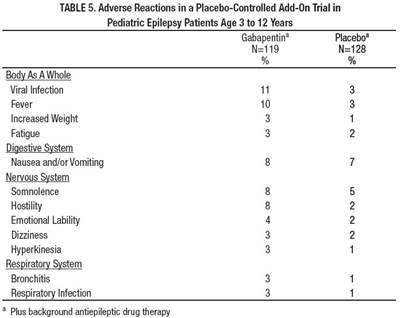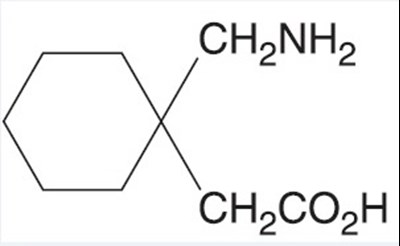Product Images Gabapentin
View Photos of Packaging, Labels & Appearance
Product Label Images
The following 15 images provide visual information about the product associated with Gabapentin NDC 43602-470 by Ascent Pharmaceuticals, Inc, such as packaging, labeling, and the appearance of the drug itself. This resource could be helpful for medical professionals, pharmacists, and patients seeking to verify medication information and ensure they have the correct product.
100 mg - 100 mg

This is a medication description for Gabapentin capsules, USP, with 100 mg strength. It has been manufactured by Ascent Pharmaceuticals, Inc. and comes in a pack of 1000 capsules that should be stored between 15-30°C (59-86°F) in child-resistant containers. The pharmacist should provide a medication guide to each patient while dispensing. Full prescribing information is available in the package insert. Rev 11/20 and NDC 43602-469-10 are also mentioned.*
300 mg - 300 mg

This is a description of Gabapentin Capsules, USP with 300 mg strength. It contains information on how to store the medication and how to dispense it in child-resistant containers. The medication guide should be given to each patient. The dosage instructions are mentioned in the package insert. The manufacturer of the medication is Ascent Pharmaceuticals, Inc. The document is labeled "Rev: 11/20".*
400 mg - 400 mg

This is a description of Gabapentin Capsules, USP with a strength of 400 mg. The medication guide should be provided separately to each patient by the pharmacist. The capsules should be stored in child-resistant containers between 15° to 30°C (59° to 86°F). Further dosage and usage information is provided in the package insert. Ascent Pharmaceuticals, Inc. located in Central Islip, NY 11722 is the manufacturer.*
equation - equ
This text provides two equations that can be used to calculate certain medical values. The first equation is used to calculate an estimated ideal body weight based on the person's age and current weight in kilograms. The second equation calculates something called "clor," which involves multiplying 72 by the person's serum creatinine level (measured in mg/dL). For female patients, the result is then multiplied by 0.85.*
fig 2 - fig2

The text is a caption for a figure showing weekly mean pain scores for a study evaluating the effectiveness of Gabapentin at different doses in the ITT population. The study has a baseline and goes up to week 7. The text is not useful without the corresponding figure.*
fig 3 - fig3

The text describes a figure labeled as Figure 3, which represents the proportion of responders (patients with over 50% reduction in pain score) at Endpoint in controlled PHN studies. Study 1 and Study 2 are mentioned, and there is a chart with percentages ranging from 0 to 100%. The chart includes different values for GBP 3600, PBO, GBP 1800, and GBP 2400.*
fig 4 - fig4

This is a graph showing the Responder Rate in patients who received Gabapentin as an adjunctive therapy for partial seizures. The data is presented as a difference from placebo and is organized by dose and study. The study was conducted in patients over the age of 12. The daily dose of Gabapentin ranged from 600 to 1800 mg. Non-English characters are present in the text, but the content is still understandable.*
Table 3 - tab3

This is a table of adverse reactions of Gabapentin and Placebo in Pooled Placebo-Controlled Trials in Postherpetic Neuralgia. The table lists % of adverse reactions across different body systems, such as Body as a Whole, Digestive System, Metabolic and Nutritional Disorders, Nervous System, Respiratory System, and Special Senses. The adverse reactions reported include Asthenia, Infection, Diarrhea, Dizziness, Somnolence, among others. Blurred vision has been reported as Amblyopias.*
Table 4 - tab4

This is a table showing the adverse reactions reported by epilepsy patients over 12 years of age treated with Gabapentin in controlled trials compared to a placebo. The adverse reactions are categorized according to body systems affected, and percentages are given for each reaction. Some of the reactions reported include fatigue, somnolence, dizziness, constipation, back pain, and diplopia. Amblyopia, which is a type of visual impairment that leads to blurred vision, is also mentioned.*
Table 5 - tab5

The text describes a table showing the incidence of adverse reactions in a placebo-controlled add-on clinical trial for pediatric epilepsy patients aged 3 to 12 years who were being treated with Gabapentin. The table shows the number of patients experiencing adverse reactions, as well as the percentage of patients. The adverse reactions are categorized by system, including body as a whole, digestive system, nervous system, and respiratory system. The reactions include viral infection, fever, increased weight, fatigue, nausea and/or vomiting, somnolence, hostility, emotional lability, dizziness, hyperkinesia, bronchitis, and respiratory infection.*
tab 6 - tab6

The text provides a table with information on controlled studies of gabapentin for PHN (postherpetic neuralgia), including the duration of the studies, dosages used, and number of patients receiving Gabapentin or a placebo. The dosages ranged from 1800 to 3600 mg/day, and the studies lasted 7 to 8 weeks. The total number of patients in the studies was 336 (with 227 receiving gabapentin). It is noted that the gabapentin was given in three divided doses (TID).*
table 1 - table1

This is a table outlining the recommended dosages of gabapentin based on a patient's renal function. The dosages are given in milligrams per day and are divided into different dose regimens (e.g., TID, BID, QD) based on the patient's creatinine clearance range. The table also includes a supplemental post-hemodialysis dose for patients on hemodialysis. The daily dose should be reduced for patients with a creatinine clearance <15 mL/min in proportion to their clearance.*
table 2 - table2

This table provides the risk of events for patients taking antiepileptic drugs vs. placebo for different indications. The indications include epilepsy, psychiatric, and other conditions. The table shows the number of events per 1,000 patients for each indication, as well as the relative risk and risk difference for drug patients compared to placebo patients.*
* The product label images have been analyzed using a combination of traditional computing and machine learning techniques. It should be noted that the descriptions provided may not be entirely accurate as they are experimental in nature. Use the information in this page at your own discretion and risk.

